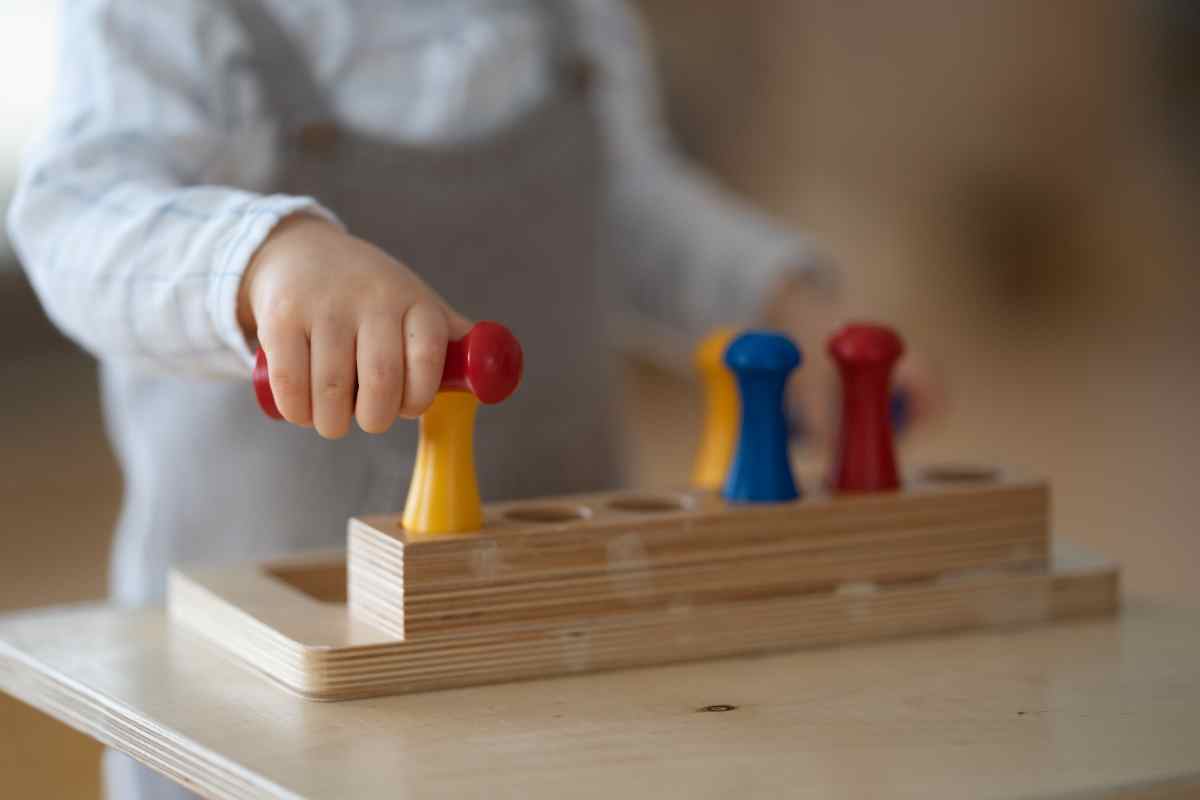Montessori education
Montessori School Selection Guide: Choose the Perfect Fit for Your Child | Expert Advice
Selecting the right Montessori school for your child is one of the most important decisions you will make as a parent. With the rapid growth of Montessori education, parents today have more options than ever. However, this also means the process can feel overwhelming. This comprehensive guide provides expert advice to help you find the perfect Montessori school that aligns with your family’s needs and values.
Table of Contents
Understanding Montessori Education
The Montessori method is a child-centered, hands-on approach focused on fostering independence, self-motivation and natural development. Developed by Dr. Maria Montessori in the early 1900s, the Montessori philosophy is built on key principles:
- Freedom with Limits: Children are free to choose activities within a prepared environment that provides structure and limits for safety and learning.
- Self-Directed Activity: Children take an active role in their learning, guided by their own interests and inner motivation.
- Sensitive Periods for Learning: Teachers identify periods of increased sensitivity to learning concepts like language and mathematics.
- Individualized Instruction: Lessons are tailored to each child’s ability, needs and pace of learning.
- Mixed Age Classrooms: Age groups spanning 3 years allow older children to mentor younger ones.
Research shows Montessori education leads to positive outcomes like improved executive function, social skills and creativity. As a parent, you can feel confident in the proven benefits of Montessori schooling.
Age-Appropriate Montessori Programs
Montessori schools offer programs tailored to different age groups:
- Infant-Toddler: Birth to 3 years old
- Primary: 3-6 years old (preschool/kindergarten)
- Lower Elementary: 6-9 years old
- Upper Elementary: 9-12 years old
- Adolescent: 12-15 years old
When selecting a school, ensure they have an environment and Montessori curriculum designed specifically for your child’s needs. Primary classrooms, for example, allow 3- to 6-year-olds to develop foundational skills through activities like Practical Life exercises and Sensorial materials. Visit schools to see if the classroom setup matches your child’s age and developmental stage.
Accreditation and Credentials Matter
It’s important to verify a school’s credentials, as any program can label itself “Montessori” without oversight. Legitimate Montessori schools pursue accreditation from organizations like the American Montessori Society (AMS) or Association Montessori Internationale (AMI).
Ask schools if they are accredited and confirm their teachers are properly trained and certified in Montessori methods through an accredited teacher education program. Don’t hesitate to inquire about credentials. This ensures your child receives a high-quality Montessori education.

Finding Montessori Schools in Your Area
Searching online, asking friends and contacting your local or state Montessori association are great ways to start your search. Resources include:
- AMS School Finder
- AMI School Directory
- Local parenting groups and social media networks
Compile a list of potential schools for further research. Expand your search radius if needed, as commuting farther may be worthwhile for the right fit.
Evaluating and Choosing a Montessori School
Narrow down your options by conducting school visits and evaluating critical factors:
Teacher Qualifications
- Montessori teaching certificate from an accredited training program
- Education level (bachelor’s degree or higher)
- Experience teaching in Montessori classrooms
Classroom Environment
- Materials and resources match the Montessori curriculum
- Appropriate size, layout and design for age group
- Areas for individual work and group collaboration
Student-Teacher Ratio
- Primary: 10-15 students per teacher
- Elementary: 15-25 students per teacher
Parent Involvement
- Opportunities to volunteer, observe and participate in school community
Special Programs
- Language, music, art, physical education, etc.
School Leadership and Culture
- Experienced Montessori administrators
- Diverse student body and inclusive culture
Schedule school visits to get a firsthand look at the environment and teaching methods. Observe how students engage with classroom materials during work periods. Meet with teachers and administrators to ask questions and discuss your child’s needs.
Navigating the Admissions Process
Montessori schools often have competitive admissions, especially at the Primary and Elementary levels. Key steps may include:
- School visits: Visit and observe classrooms before applying
- Application: Submit required forms and documentation
- Entrance assessment: School readiness screening
- Interviews: Meet with teachers and your child to assess fit
- Registration: Enroll once accepted by submitting fees
To maximize chances of admission, begin the process 1-2 years before desired enrollment. Submit applications as early as possible, ideally a year out. Expect to be waitlisted if applying late. Some schools enroll new students only at the start of an academic term.
Paying for Montessori Education
Tuition at private Montessori schools averages $8,000-$15,000 annually for half-day Primary programs, and $10,000-$25,000 for full-day Elementary. Additional costs may include fees and school supplies. Here are some options that can help cover expenses:
- Financial aid and tuition assistance: Income-based support available at many schools
- Scholarships: Awarded by schools and external organizations
- School savings plans: Tax-beneficial 529 plans allow prepayment of future tuition
- Loans: Student loans may be available depending on laws and school eligibility
- Grants and tax credits: Government education funds and tax breaks
Start budgeting and financial planning early. Discuss costs upfront with schools to make an informed decision.

Assessing the Quality of Education
Look beyond appearances to truly gauge a Montessori school’s quality:
- Observe how engaged students are during classroom work periods
- Ensure mixed-age classrooms have three distinct age groups
- See that lessons are brief and followed by practice time
- Note whether teachers interact respectfully with students
- Verify that concrete Montessori materials are meticulously organized
High-quality Montessori schools facilitate joyful, self-driven learning. Students gain independence through developing concentration, motor skills and problem-solving abilities. With an expertly prepared classroom environment, teachers observe and guide more than directly instruct.
Getting Parent Perspectives and Reviews
Connecting with current and past parents can provide valuable insights into a school’s strengths and weaknesses. Seek reviews on:
- School websites: Featured testimonials
- Social media: Join parent groups to ask questions
- Review sites: Niche, GreatSchools, Private School Review
Take all reviews with a grain of salt. Isolated grievances or raves may not represent the typical experience. Read between the lines to gauge the school’s community and culture. Trends among multiple reviews likely signal key considerations.
Gaining Insights from Montessori Experts
To complement parent reviews, consider perspectives from Montessori education leaders:
“When observing classrooms, look for engaged, self-directed learning. Students should work quietly and purposefully with materials, developing concentration and independence.” – Sarah, Primary teacher
“A quality Montessori environment meets all a child’s developmental needs – cognitive, physical, social-emotional. There’s careful thought in the classroom design.” – Lucy, Head of School
“Montessori isn’t a hands-off approach. Teachers closely track each student’s progress and understand when to intervene versus letting children problem-solve.” – Noah, Elementary teacher
Experts know what to look for in a truly Montessori environment. Take note of their advice when visiting schools.
What to Look For on Montessori School Tours
Tours offer a window into the school environment and culture. Observe students and ask questions on:
- Student engagement during work periods
- Classroom layout and materials
- Multi-age classrooms and student interactions
- Transitions between activities and learning areas
- Discipline methods and student behavior
- Caring teacher-student rapport
- Developmentally appropriate activities
Watch how classroom activity flows. Students should work purposefully and independently with materials. Minimal teacher intervention should be needed. Also notice if school culture seems inclusive, warm and welcoming.
Making the Final Montessori School Decision
After research, tours and interviews, reflect on your impressions:
- Make a checklist of your top priorities.
- Review notes from school visits and meetings.
- Discuss insights with your partner, family and other parents.
- Trust your instincts – you know your child best.
- Weigh pros and cons until a school stands out above others.
The right match might not be the school you originally expected. Keep an open mind and focus on your child’s needs. Once you select a school, finish enrolling and help your child transition. Attend orientation events and volunteer to get involved.
With the proper time and effort, you can successfully choose a Montessori school where your child will thrive! Reach out to me anytime if you need additional guidance during this exciting process.
Conclusion: Start Your Child’s Journey to Success
Selecting your child’s Montessori school is a defining decision. While the process takes time, it is well worth the investment. High-quality Montessori education plants the seeds for a lifetime of achievement by nurturing your child’s natural curiosity and love of learning. This guide provided expert advice to help you make a thoughtful choice grounded in your family’s needs and values. By choosing the perfect Montessori school fit, you ensure your child will flourish in a rich educational environment. Begin this journey today and enable your child to maximize their potential!

FAQs
What is the Montessori educational approach?
The Montessori method is a child-centered approach based on supporting children’s natural development through self-directed activity, hands-on learning with manipulative materials, and mixed age classrooms.
How do Montessori schools differ from traditional schools?
Montessori schools emphasize student choice, self-paced learning, multi-age classrooms, hands-on materials, and minimal lecturing from teachers. Traditional schools tend to use more direct instruction, single-age classrooms, standardized curriculums, and less manipulative learning.
What age range do Montessori schools typically cater to?
Montessori serves children from infant through high school, but the core age range is preschool through 5th or 6th grade. Programs are tailored to different levels like Primary (3-6 years) and Elementary (6-12 years).
Are Montessori schools accredited or regulated?
Many Montessori schools pursue accreditation through organizations like AMS and AMI. It’s important to verify the school’s credentials and teacher training qualifications.
How can I find Montessori schools near me?
Online databases like AMS and AMI school finders are helpful starting points. Also search locally, ask other parents, and check directories for accredited Montessori schools in your area.
What are the key factors to consider when selecting a Montessori school?
Teacher credentials, student-teacher ratios, classroom environment, school leadership, parent involvement, and student diversity/inclusivity are some major factors to evaluate.
Do Montessori schools have specific admissions requirements?
Admissions can be competitive, with applications, assessments, interviews, and registration fees. Timeline varies but aim to apply 1-2 years before desired enrollment start.
What is the teacher-to-student ratio in Montessori classrooms?
Recommended ratios are 1:10-15 for Primary classrooms and 1:15-25 for Elementary environments. Lower ratios allow for more individualized teaching.
How can I assess the quality of Montessori education at a school?
Observe student engagement, classroom materials, multi-age dynamics, teaching methods, and child-centered interactions during school visits. Authentic Montessori classrooms facilitate concentrated, joyful self-learning.
Are there scholarships or financial aid options for Montessori education?
Many Montessori schools offer financial aid and scholarships. Additional help may be available through external groups, government funds, school tax benefits, and loans.
Let me know if you need any clarification or have additional questions!
References
https://www.montessoriinreallife.com/home/2020/2/1/choosing-a-montessori-school
https://www.montessori.org/how-can-i-determine-if-montessori-is-right-for-my-child/
https://threeminutemontessori.com/how-to-choose-an-authentic-montessori-school/
https://www.stepbystepmontessori.com/8-questions-ask-choosing-montessori-school/
https://winnie.com/resources/6-tips-on-how-to-choose-a-montessori-school
https://childrenshouse-montessori.com/2019/08/27/what-to-look-for-in-a-montessori-preschool/

